A structured settlement can be a great way to ensure an injured worker is able to care for himself and his family for life. But it’s important to make sure all the right parties involved and are working as a team. Otherwise, there could be adversarial relationships and unintended consequences down the road.
While most people believe they would be best able to control their money by taking a lump sum, there are vast amounts of research to the contrary. Many people who do so end up with little to no money within just a few years. A structured settlement provides the injured worker with a steady, predictable tax-free income to handle all of life’s obstacles – when it is set up correctly.
Types of Issues
The injured worker’s future medical and living expenses are obvious needs. But, setting up a lifetime income stream entails identifying and thinking through all of a person’s financial needs over his lifetime. Examples of just a few of the issues that might need to be addressed include:
• Medicare compliance.
• Lien satisfaction.
• Public benefits.
• College education.
• Home ownership.
• Business setup.
A properly developed structured settlement must take into account the needs of the particular individual, since each person is different. Focusing on those, rather than just a dollar amount, yields the best outcome for all. As an example, an injured worker who is a quadriplegic might need money for medical treatment and pharmaceuticals, home modifications, a vehicle retrofitted to handle his needs, money for his child’s eventual college education, and funds to establish his own business so he can be a productive member of society.
An injured worker incapable of caring for her own children might need money for caregivers for them, as well as someone to help care for herself. Additional funds might be needed for the children’s college educations. It’s imperative to determine what is most important to the injured worker.
People Involved
The settlement could include a combination of strategies. For example, there may be liquid cash to handle immediate financial obligations such as medical expenses or liens resulting from the injury, a trust to protect certain benefits, and a tax-free annuity to cover future financial needs.
A properly setup structured settlement can solve complex problems if the key people are involved in the process. The first step is to identify the injured worker’s needs and goals; then consult with all relevant parties. Some of the key players in a structured settlement could be:
• Structured settlement broker. You want a reputable person and organization with experience and a solid track record of producing successful structured settlements.
• Injured worker. The injured worker should not be an afterthought in the process, but should be actively engaged to avoid disputes later on.
• Family members. Depending on the injured worker’s situation, it might be beneficial to include a spouse, sibling(s), parent(s) children, and/or relatives.
• Medical personnel. The treating physician and possibly additional medical experts should be consulted to ensure all the injured worker’s medical issues are addressed.
• DME specialist. Wheelchairs, ramps, and special equipment for the home and/or vehicle should be
considered both for the immediate future and the long term.
• Attorneys. Lawyers involved in the claim should all be included in the structured settlement discussions to iron out any challenges that might arise. Additionally, there may be a need for additional attorneys, perhaps to set up a special-needs trust.
• Benefits experts. If the injured worker is receiving Medicare, Medicaid or some other public benefit, experts should be consulted to ensure those benefits are protected. Also, the injured worker may have questions; for example, he might want to know how much Medicare would provide for special equipment, such as wheelchairs or home modifications.
• Tax/financial experts. These experts may be needed to answer questions about future issues that might arise, such as the tax consequences involved in setting up a home business.
Structured settlements offer peace of mind for injured workers seeking a long-term income stream. They
are tax free, customized, and carry no risk, as they are not subject to the whims of Wall Street. By working
closely with the injured worker and assembling all the appropriate parties, a structured settlement can be a
win-win for all involved. SCOTT HOOVER, Settlement Consultant • SHoover@ringlerassociates.com
JEFF KLUGERMAN, Settlement Consultant • JKlugerman@ringlerassociates.com
WILLIAM MATHEWS, Settlement Consultant • WMathews@ringlerassociates.com
JIM VOLANTI, Settlement Consultant • JVolanti@ringlerassociates.com

